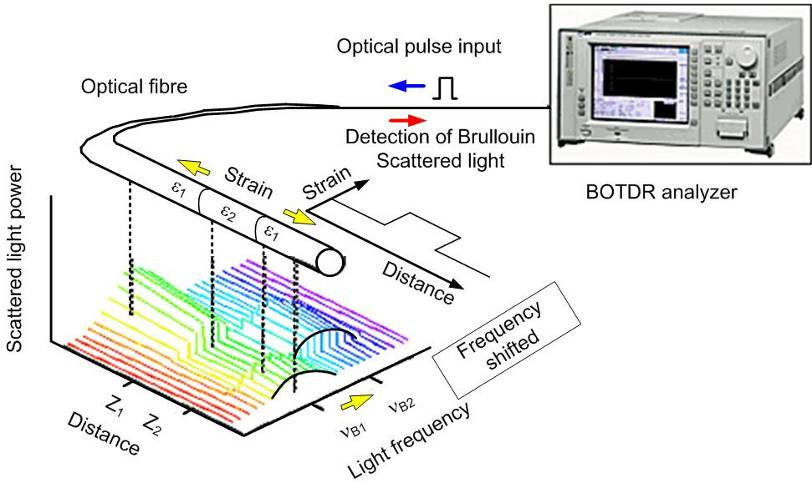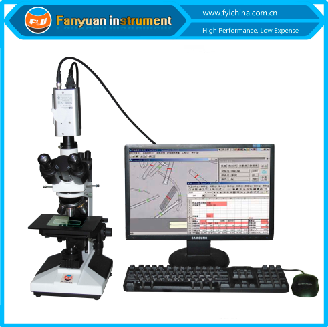Top-Rated Optical Fibre Diameter Analyser for Heavy-Duty Use
Top-Rated Optical Fibre Diameter Analyser for Heavy-Duty Use
Blog Article
Optimize Your Fiber Optic Performance: Understanding Optical Fiber Diameter Analyser Modern Technology
The performance of fibre optic systems is critically affected by the precision of their size, an element often overlooked in the search of optimal signal stability. Comprehending the modern technology behind optical fiber size analysers discloses the elaborate balance between dimension accuracy and manufacturing quality.
Relevance of Optical Fiber Size
The diameter of optical fiber plays an essential duty in identifying the performance and performance of communication systems. On the other hand, smaller sized diameters often tend to sustain fewer settings, which can boost signal clearness and reduce crosstalk.

In addition, understanding the diameter's ramifications can bring about cost financial savings by minimizing the demand for signal amplification and repeaters in considerable networks (optical fibre diameter analyser). In final thought, the value of optical fiber size can not be overemphasized, as it directly affects the overall efficiency and integrity of modern communication systems

Just How Size Influences Signal Quality
Signal top quality in optical fiber systems hinges substantially on the diameter of the fibre. A smaller diameter can lead to greater attenuation rates, resulting in signal loss as light travels with the fibre.
Conversely, larger sizes normally enable enhanced light capture and lowered modal dispersion, improving signal clearness. In multimode fibres, a bigger core size can support several light settings, but it might additionally present intermodal dispersion, which can break down signal top quality. For that reason, picking the optimal fiber diameter is important for attaining the desired performance in certain applications.
Moreover, the communication in between the fiber diameter and the wavelength of the light utilized plays a critical role in establishing the efficient transmission distance and total signal honesty. Recognizing just how fibre size influences signal high quality is essential for network designers and engineers aiming to enhance optical fiber systems for reputable, high-speed information transmission.
Summary of Diameter Analyser Modern Technology
In many optical fibre production procedures, accurate dimension of fibre size is vital for making certain consistent efficiency and high quality (optical fibre diameter analyser). Diameter analysers are sophisticated instruments developed to examine the physical measurements of optical fibers with high accuracy. They employ innovative optical and laser modern technologies to gauge the diameter, ovality, and concentricity of the fibre, therefore providing important data for high quality control
These analysers can run in-line throughout the manufacturing procedure or as component of off-line screening protocols. In-line systems allow real-time tracking, permitting producers to change criteria immediately, thus keeping optimum manufacturing problems. Off-line analysers, on the other hand, provide detailed evaluations of sets, making sure that any kind of variances from defined tolerances are recognized and resolved.
Diameter analysers significantly contribute to the reduction of flaws in optical fibers, boosting overall product reliability. By consistently determining essential criteria, these modern technologies facilitate compliance with market requirements and specifications. As the demand for high-performance optical fibers continues to rise, the function of size analysers comes to be progressively important in accomplishing the desired high quality and performance criteria in fiber optic systems.
Key Features of Fiber Size Analysers
Although numerous models of fibre diameter analysers exist, they generally share a number of vital functions that improve their performance and reliability. One of one of the most substantial attributes is high-resolution measurement abilities, which ensure precise size analyses, important for maintaining high quality control in fibre manufacturing. Additionally, numerous analysers integrate innovative optical sensing units made to identify minute variants in fibre diameter, thus offering invaluable information for procedure optimization.
One more crucial feature is real-time tracking, enabling drivers to get immediate responses on fibre diameter throughout the manufacturing procedure (optical Full Report fibre diameter analyser). This ability assists in rapid changes and minimizes the probability of issues. Several analysers also come geared up with user-friendly interfaces, allowing drivers to quickly browse through information and setups outcomes
Moreover, robust information storage and evaluation functionalities are necessary for tracking historic efficiency fads and guaranteeing conformity with market criteria. Some designs also supply connectivity choices for integration into existing manufacturing control systems, enhancing overall operational effectiveness. Last but not least, mobile and small styles permit versatile deployment within manufacturing atmospheres, ensuring that quality control procedures are seamless and effective. These features jointly add to the efficacy of fiber size analysers in optimizing fibre optic performance.
Best Practices for Fibre Optimization

First, regular calibration of optical fibre size analysers is essential. This ensures exact dimensions and decreases potential inconsistencies that can impact efficiency. Next, maintaining a clean workplace is vital; dust and impurities can result in indicate degradation.
Additionally, it is very important to choose fibers that satisfy details application needs. This involves evaluating variables such as depletion, bandwidth, and ecological problems. Correct setup methods must additionally be complied with, including staying clear of sharp bends and excessive stress, which can jeopardize fibre integrity.
Moreover, employing innovative surveillance systems can assist in real-time efficiency evaluations, enabling punctual recognition of problems. Regular screening and maintenance must be carried out to guarantee that fibres stay within optimum functional criteria.
Last but not least, training employees on the most recent fiber optimization modern technologies and techniques will boost their capability to carry out reliable techniques. check that By complying with these best practices, companies can substantially boost the efficiency and life expectancy of their optical fibre systems, guaranteeing reliable interaction and information transfer.
Final Thought
To conclude, the integration of optical fiber diameter analyser technology is essential for making best use of fiber optic performance. By ensuring precise dimensions of fibre measurements, these analysers dramatically boost signal quality and reduce losses throughout information transmission. Normal calibration and maintenance of the analysers are vital to copyright optimum performance and conformity with sector standards. Ultimately, the application of this modern technology promotes boosted information transmission rates and reinforces signal stability, adding to the general efficiency of fiber optic systems.
Signal top quality in optical fibre systems pivots substantially on the diameter of the fiber.In numerous optical fiber manufacturing processes, exact measurement of fibre size is necessary for guaranteeing regular performance and top quality. As the demand for high-performance optical fibres proceeds to climb, the role of size analysers comes to be increasingly vital in accomplishing the preferred high quality and efficiency standards in fiber optic systems.
These features jointly add to the efficiency of fibre size analysers in optimizing fiber optic click site performance.
In verdict, the integration of optical fiber size analyser technology is crucial for maximizing fiber optic performance.
Report this page